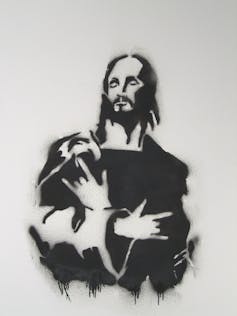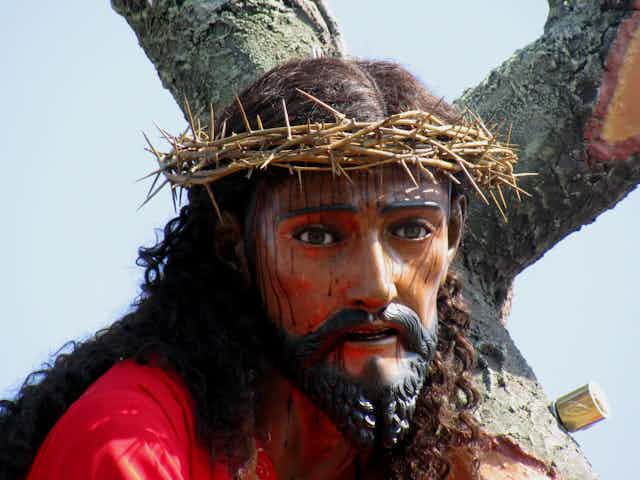Any book that is dedicated to Galileo is likely to be trying to change the way we see things. The Five Gospels: What Did Jesus Really Say? (1993) aimed to alter our perspective on the historical figure of Jesus of Nazareth by telling us what he really said and, consequently, what he didn’t.
The Five Gospels communicated the aims, methods and results of the Jesus Seminar, a group of scholars of early Christianity whose work commenced 30 years ago, in March 1985. The significance of the book and the Seminar lay partly in the admirable ambition to communicate the results of critical biblical scholarship to a wider audience.
But the work of the Seminar was also notable for the confidence with which members went about their work. In The Five Gospels, the authors were able to state categorically that “eighty-two percent of the words ascribed to Jesus in the gospels were not actually spoken by him”.
This exact figure was the product of a careful, and by now rather infamous, method of analysis: draw up an inventory of every saying attributed to Jesus in the first three centuries of the Common Era, in all variant forms and traditions; analyse each saying, using a set of “tests” or “criteria” that might help to establish its relative historical authenticity; and then cast a vote, using coloured beads:
Red = yes, Jesus said it
Pink = it sounds quite like Jesus
Grey = probably not, but it might contain his ideas
Black = no way, the saying and its content comes from the later theology of the church.
Coloured beads notwithstanding, the method and intent of the Seminar has a long, distinguished and influential pedigree. In many ways The Five Gospels represents the zenith, or for some the nadir, of the quest for the “historical Jesus”. The product of the encounter between Christendom and the Enlightenment, this “quest” has sought to peel back the layers of faith, dogma, theology and interpretation from the gospels, in order to expose the “real”, historical Jesus to public gaze.

Through its long history and in its variant forms, the quest for Jesus has often thrived precisely on its capacity to challenge established, confessional and traditional ways of thinking about Jesus. Philosopher Hermann Samuel Reimarus (1694–1768), who was the first to make a clear distinction between the historical Jesus and the Christ of faith, challenged the historicity of the resurrection accounts.
Theologian David Friedrich Strauss (1808–1874) was fired from his post in Tübingen because of his claim that much of the material in the gospels was legendary. Nobel Prize winner Albert Schweitzer (1875–1965), who began his academic career as a biblical scholar, concluded that the historical Jesus was a fascinating, but strange and largely irrelevant figure.
Members of the Seminar have built on this legacy. Biblical critic Robert Funk (1926-2005), the Seminar’s founder, aimed to help Jesus “escape from our creedal and experiential dungeons” and so to inaugurate a “new reformation”.
However admirable the intent, it is now becoming clear that the method used by the Jesus Seminar and, until recently, by a large proportion of scholars of the New Testament and Christian origins, is flawed. The various kinds of “tests” applied to the sayings of Jesus prove not to be especially helpful.

Gathered together under the heading “criteria of authenticity”, they appeared to provide scholars with a set of sharp tools with which to separate historical fact from theological interpretation. Many scholars still work with the idea that if Jesus says something that sounds too “Christian” then it is likely that he didn’t say it.
There are one or two obvious places where this works (for example the Trinitarian formula of Matthew 28:19), but it presupposes that there are some Jesus traditions that are demonstrably unaffected by later Christian interpretation. This is unlikely.
Drawing on wider disciplinary discussions in the humanities, historical Jesus scholars have begun to reconfigure the way we see the Jesus tradition. Jens Schröter, who teaches at Berlin’s Humboldt-University, has recently called for “a new Testament science beyond historicism”.
This means, in other words, that many New Testament scholars, including (it seems) members of the Jesus Seminar, have been working with outdated conceptions of the nature of history and the task of historiography.
Using sociologist Maurice Halbwachs’ (1877–1945) notion of “social memory”, a number of scholars have begun to unpack the dynamics of stability and variation, as these relate to the early church’s memories of Jesus. These insights help us to see that it is difficult - perhaps impossible - to excavate the real, historical Jesus from the accumulated layers of theological interpretation that our sources preserve.
The traditions about Jesus cannot be separated out into the categories of early and late, primary and secondary, authentic or inauthentic, fact and interpretation. One might as well try and unscramble an omelette.
Thus, those who go searching for Jesus are faced with a situation in which, to quote New Testament professor Anthony Le Donne:
[t]he historian cannot separate facts from interpretations, nor should he/she try.
Far from offering a licence for excessive confidence in, or scepticism about, the historical reliability of the gospels, this newer approach to the study of Jesus invites consideration of the various ways in which the church’s interpretation of the life of Jesus bears the imprint and influence of Jesus’ historical life.
Thirty years ago, the Jesus Seminar saw the potential of this approach when those involved concluded that the gospels only provide us with the “gist” of what Jesus said and did. Getting the gist of Jesus will not fulfil our desire for historical certainty.
But it is enough of a task for historians, and the church if it wishes to, to be getting on with.
This article is part of The Conversation’s Religion + Mythology series.

